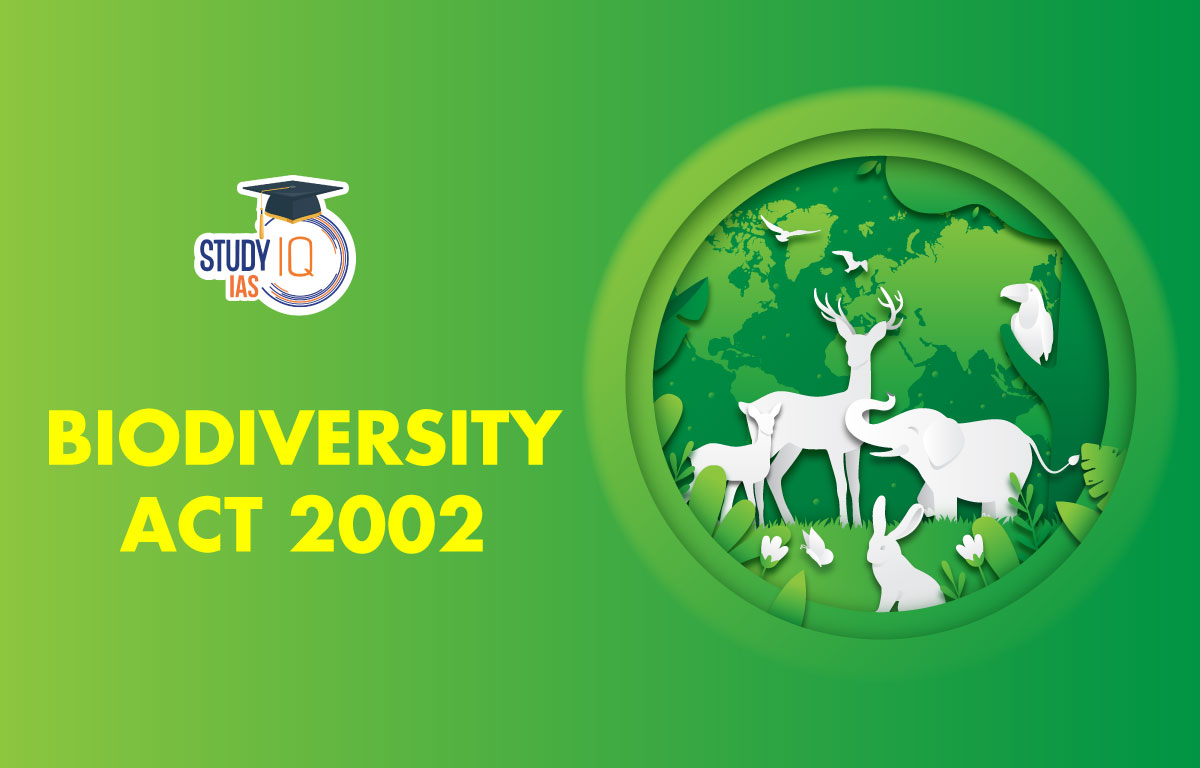
Biodiversity Act 2002 came into force on 5th Feb 2003 to protect India's rich biological resources & ensure equitable sharing of benefits. Read all about Biodiversity Act 2002 in this article for UPSC
Last updated on May 26th, 2024 02:46 pm

Table of Contents
The Biodiversity Act of 2002 was enacted by the Indian Parliament to address concerns related to the conservation and sustainable use of India’s rich biodiversity. The Biodiversity Act 2002 came into force on 5th February 2003 and complements the Wildlife Protection Act of 1972.
The need for such an Act arose from the realization that India is one of the world’s most biologically diverse countries, with a wide range of flora and fauna that are unique to the country. However, biodiversity was under threat from various factors, including habitat destruction, over-exploitation, climate change, and other human activities.
In addition, the traditional knowledge of local communities about the use and conservation of biodiversity was being eroded, and there was a need to protect and promote their rights in this regard. The Biodiversity Act of 2002 was thus designed to provide a legal framework for the conservation and sustainable use of India’s biodiversity, while also ensuring that the benefits arising from its use were shared equitably among all its citizens, particularly local communities.
The Biodiversity Act 2002 was also aimed at promoting research and development in the field of biodiversity, by regulating access to it and ensuring that its use did not cause harm to the environment or lead to the loss of biodiversity.
The Biodiversity Act of 2002 is a comprehensive legislation that seeks to regulate access to India’s biodiversity, promote its conservation and sustainable use, and ensure the equitable sharing of benefits arising from its use. Some of its salient features include:
While the Biodiversity Act of 2002 is an important legislation aimed at promoting the conservation and sustainable use of India’s biodiversity, it does have some limitations that may hinder its effective implementation. Some of these limitations include:
There is still a lack of awareness among the general public, including local communities and stakeholders, about the provisions of the Act and their rights and responsibilities under it. This can lead to non-compliance and a lack of effective implementation.
The government and other authorities responsible for implementing the Act may lack the resources, including personnel and financial resources, to effectively carry out their duties.
The penalties for non-compliance under the Act may not be severe enough to deter violators, and there may be inadequate enforcement of the Act by the authorities.
There may be limited coordination among different government agencies responsible for implementing the Act, which can lead to duplication of efforts and inefficiencies.
While the Act mandates equitable benefit-sharing, there may be challenges in identifying and distributing the benefits arising from the use of biodiversity, particularly in cases where the benefits are indirect or diffuse.
The Act primarily focuses on regulating access to biodiversity for research and commercial purposes. However, there may be limited engagement with the private sector, which can be a major user of biodiversity and may have significant impacts on biodiversity conservation.
The Biodiversity Act of 2002 is an important topic from the environment and ecology perspective and is relevant for the UPSC Civil Services Examination. This topic is important for both prelims and mains exams. Some key points about the Biodiversity Act that UPSC aspirants should be aware of include its background, salient features, limitations, significance and linkages with SDGs.